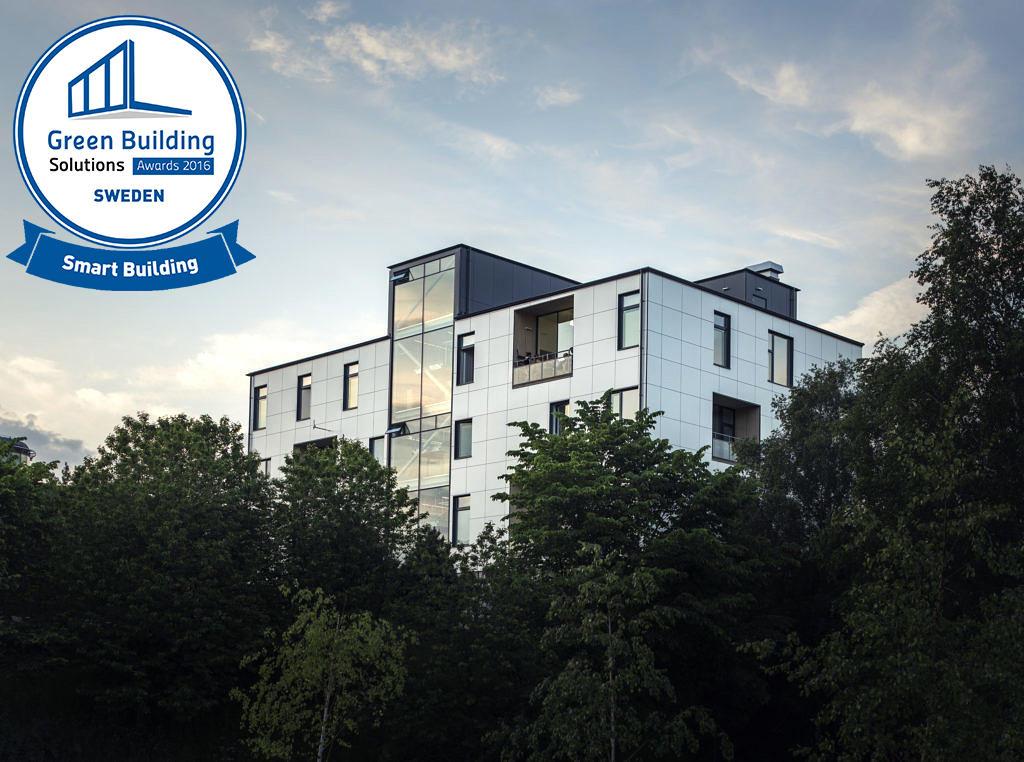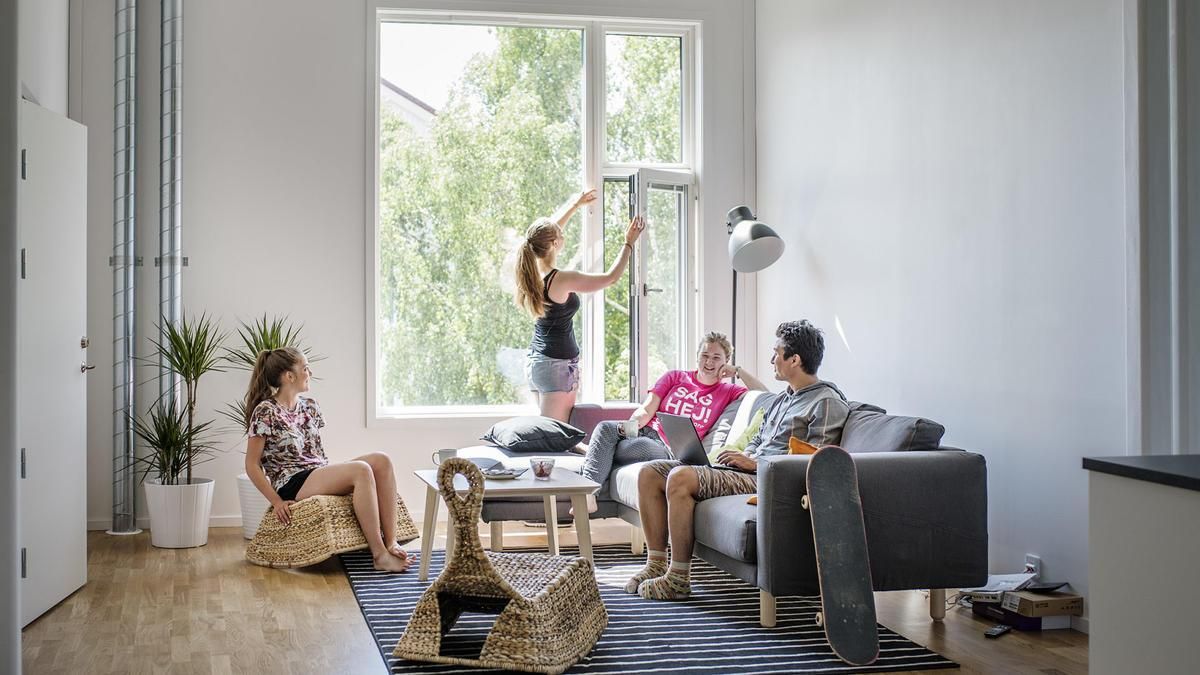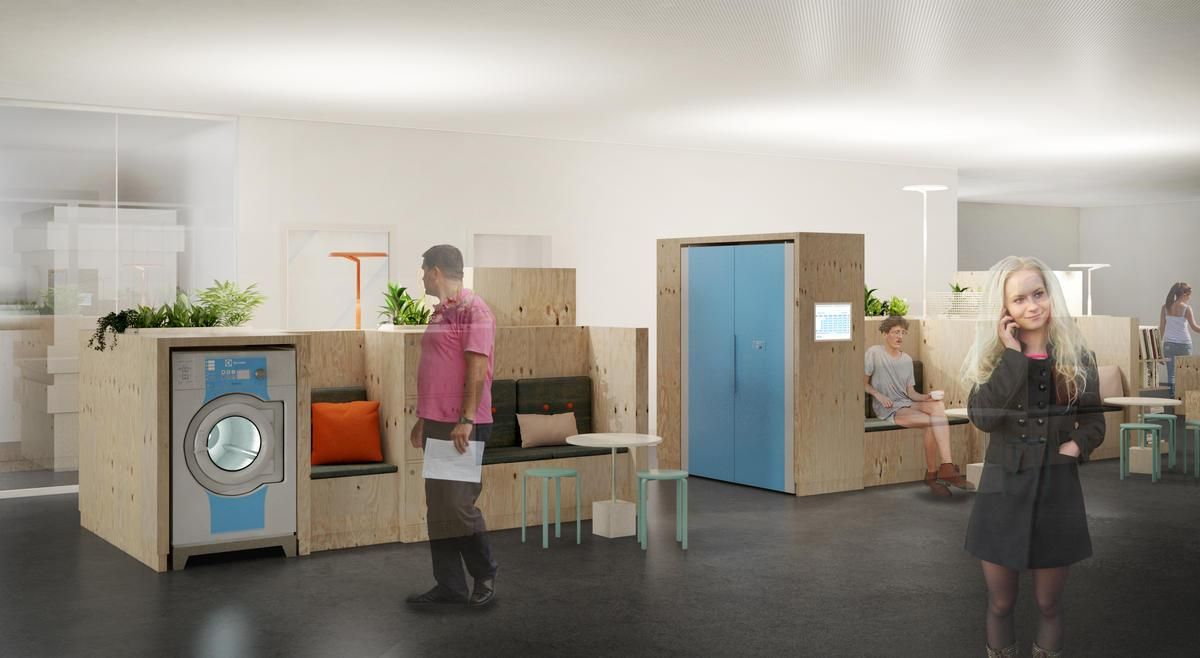Eva Kouraki, HSB Living Lab: "Our participation to the Awards certainly increased study visits"

In 2016, HSB Living Lab received a special mention of the jury in the Green Solutions Awards, for the Smart Buildings category. Eva Kouraki, one of the project managers, presents this awarded building and its solutions
Eva Kouraki: I work as a Project Manager of Open Arena - Urban Development at Johanneberg Science Park, in Gothenburg, Sweden since 2015. As a project manager, I am responsible for the collaborative project HSB Living Lab in which Johanneberg Science Park is one of the main partners together with Chalmers University of Technology and HSB. I am also responsible for developing, securing funding and coordinating new collaborative regional or EU projects within the area of sustainable urban development.
Johanneberg Science Park was founded in 2010 at the campus area of Chalmers University in central Gothenburg. Johanneberg Science Park is a meeting point for the exchange of ideas and knowledge between academia, the business world and the community actors and aims to strengthen competitiveness, attractiveness and growth of the region. The activities of the park are concentrated on the areas of Urban Development, Energy, Materials & Nano Technology. Funders of the park are the City of Gothenburg and the Chalmers University of Technology while its owners include several industrial actors such as AB Volvo, Bengt Dahlgren AB, Gothenburg Energi, HSB, MölnDala Fastighets AB, Peab AB, Riksbyggen, Tyréns AB, Skanska and White arkitekter.

How was the project born?
E.K.: The idea of HSB living lab project generated in 2011 in Holland, Delft at a kick off meeting, of an EU-project about development of infrastructures of living labs in Europe where representatives from Johanneberg Science Park and Chalmers were participating. At that time HSB, a real estate company became member of Johanneberg Science Park. After that meeting, Johanneberg Science Park brought together Chalmers and HSB. We started having meetings on how we could together develop a living lab where innovative and sustainable solutions for the future of living could be developed and tested. By using Johanneberg Science Park’s Open Arena, we have managed to involve 9 more partners in this initiative not only from the built environment sector but also from IT, energy and home appliance industry. In 2013, our idea has formed into a concrete plan which was the construction of a habitation infrastructure, in the form of a four-story modular student building with residential and research sections at Chalmers campus area in Gothenburg city. Our plan was to build a third generation living lab providing at the same time apartments to students and researchers and a unique venue for real-world, user-centered prototyping and innovation. The building was constructed by 44 steel modules which were put together within 10 days during Spring 2016. In June 2016, 26 students and researchers moved in the living lab.
What was the sustainability approach for HSB Living lab?
E.K.: Our sustainability goal with HSB Living Lab project was to generate smart solutions and practices that will improve our future sustainable homes. To achieve this goal, we decide that the best way is to create a real-life environment where target-users participate in both testing and development of innovative products and services. At the same time, through co-creation and open innovation processes in this home environment we can research technologies and behavioral practices that make our living more sustainable.

What solutions did you implement to reach your goals?
E.K.: In the first place, HSB Living Lab’s construction is a research project in itself. Therefore, by using modules and temporary building permits we aim to investigate whether this is a sustainable, economical, environmentally-friendly and socially-viable construction business model.
As a second and main step, we have created an online platform were all research, development and demonstration project ideas related to sustainable living can apply to run in the living lab.
At the moment, there are 17 ongoing research projects in the lab connected to sustainable building materials, energy saving technologies, low temperature return district heating systems, user behavior on energy consumption, sharing economy, minimization of food waste, evaluation of rainwater reuse technologies etc.
In addition, 2000 sensors measuring every detail as well as many of the 15,000 meters of data cable are installed in the building measuring indoor environmental quality, in-wall temperature, moisture and CO2 levels, the electrical energy, outdoor weather conditions, water flow and temperature, positioning, heating flow and energy, ventilation etc. Our aim is to use this information in the light of energy saving and applied innovations.
What benefit did you get from participating to the Green Solutions Awards?
E.K.: Our participation and nomination of the 3rd place at Smart Building category of Green Solution Awards 2016 proved to be beneficial for HSB Living Lab. It provided an international visibility and recognition of the project and have certainly increased the number of study visits we have received from abroad during this year.



